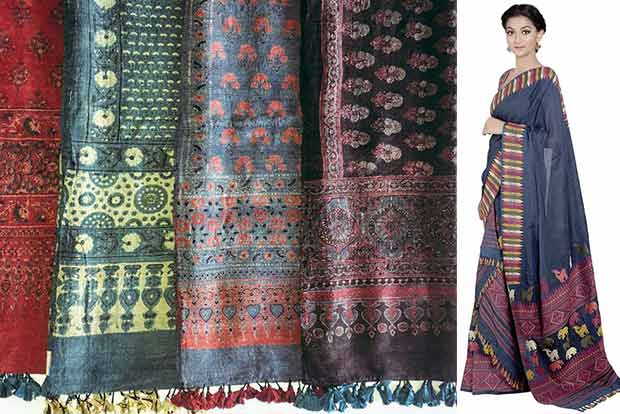Begin typing your search...
Textiles to narrate a tale of India’s natural dye tradition
At an exhibition to be organised in the city by the Crafts Council of India, six chosen artisans, who work with heritage dyes and handlooms, will display stoles, sarees and fabrics made by them.

Chennai
The Crafts Council of India (CCI) has been at the forefront of the natural dye revival movement in and around the country. Next week, it will host the ‘Dye Natural’ exhibition in Chennai, which is a celebration of the colours of nature. Six artists have been invited to showcase their works — Dayalal Kudecha’s Bhujodi weaves, Abdul Rauf Khatri’s double-sided Ajrakh block prints, Dastkar Andhra’s soft palette of natural dye shades, MG Gramodyog Sewa Sansthan’s muslins and khadis, Anuradha Pegu’s weaves from the Northeast and Brij Ballabh’s sanganeri prints will be on display and for sale.
Giving us a brief about India’s heritage of dyes, executive committee member of CCI Jayasri Samyukta says, “Extracting dyes from flowers, leaves, fruits, bark, stones and other bounties of nature is a 5,000-year-old tradition in our country. However, natural dye making and the use of it in fabric, sarees and textiles greatly diminished until the early 21st century. Since the mid-1900s, there has been a resurgence of natural dyes.”
One of the artists who is exhibiting his works at the upcoming event, Abdul Rauf Khatri, agrees with Jayasri. “My family has been in the Ajrakh block printing field for the past 10 generations — they were probably a part of it even before that but we don’t have proof. The biggest difference between my grandfather’s time and mine is that back then, there was a huge lack of demand for naturally
dyed fabrics.”
He points out, “In pre-Independence India, every community or caste had to wear uniformly the same kind of clothes in the same colour. After the 1950s, these barriers began to break and everyone started appreciating various Indian fabrics. It’s got a worldwide reach today.” Since things are looking up for artisans like him thanks to the support of the government and regular, sufficient income, he says he will encourage his young son to take up this business too.
Of late, there is also an urgent and growing concern for environmental pollution and ecological devastation due to the knowledge of health and environmental impacts of synthetic dyes. This has led couturiers and boutiques to bring out natural dye fashion and prêt lines, and create awareness about textiles going back to its natural roots.
Take Anuradha Pegu, for instance. Hailing from the Northeast, she has a boutique that sources natural dyes like lak and turmeric from Jaintia Hills, Meghalaya, and indigo from Assam to make traditional ethnic wear from Assam. She has even gone on to display her collections at the Lakme Fashion Week 2016-17 and Silk Road International Exposition (SRIE) held in People’s Republic of China.
When asked where she sources the colours from, she replies, “As far as indigo dye is concerned, we source the material from Chennai or Hyderabad. This is due to the infrequent or inaccessible raw materials —we need to use the kachcha leaves of the plant to extract the dye. Alternatively, we use ‘grey’ indigo instead of blue. This contains iron ore that we procure from Cherrapunji, which we mix with the leaves to produce carbon flakes.”
To tell the story of such artists and their tryst with the traditions of India, ‘Dye Natural - Colours of Nature’ will be held at Kamala,12 A-C, Co-optex Grounds, 350 Pantheon Road, Egmore, between February 21 and 23 from 1030 am to 7 pm. Contact: 044 28191457
Visit news.dtnext.in to explore our interactive epaper!
Download the DT Next app for more exciting features!
Click here for iOS
Click here for Android
Next Story



